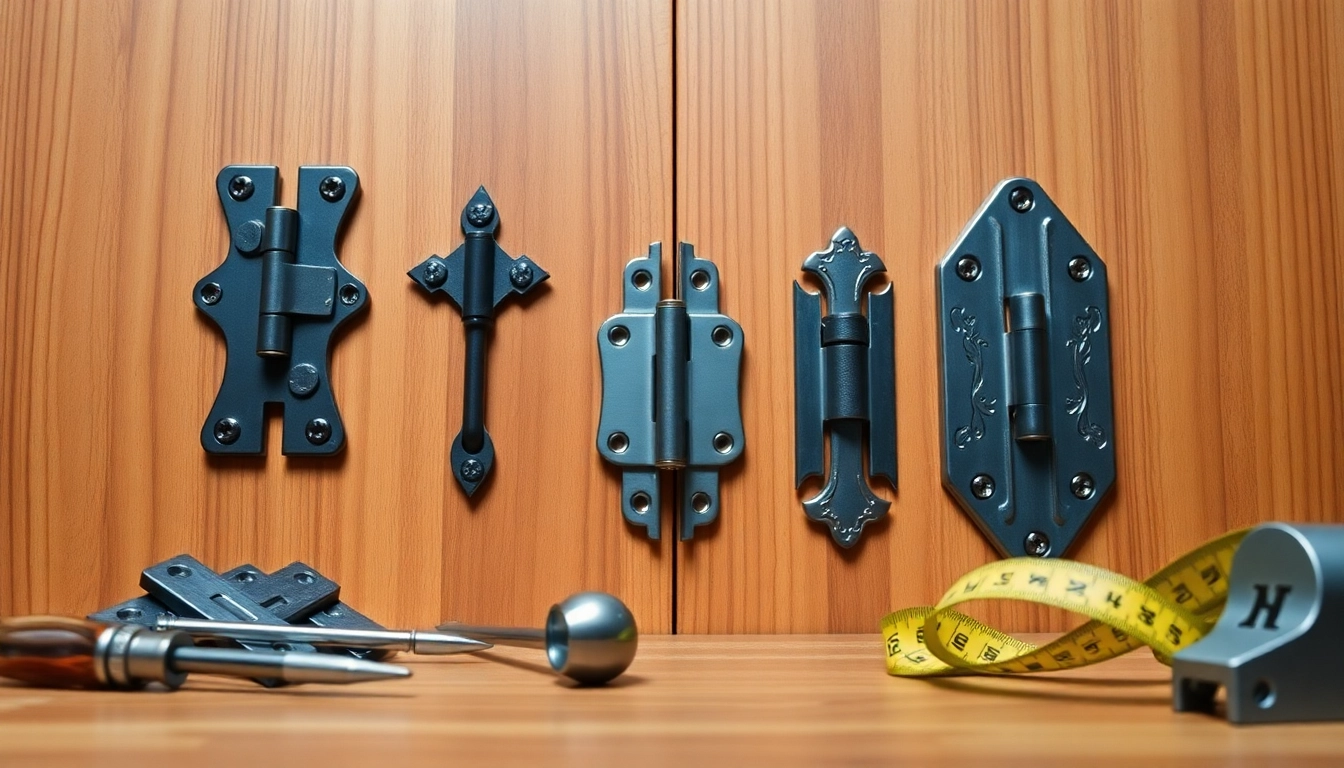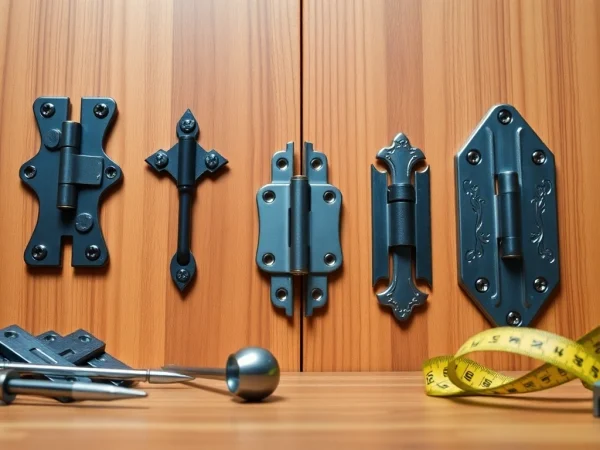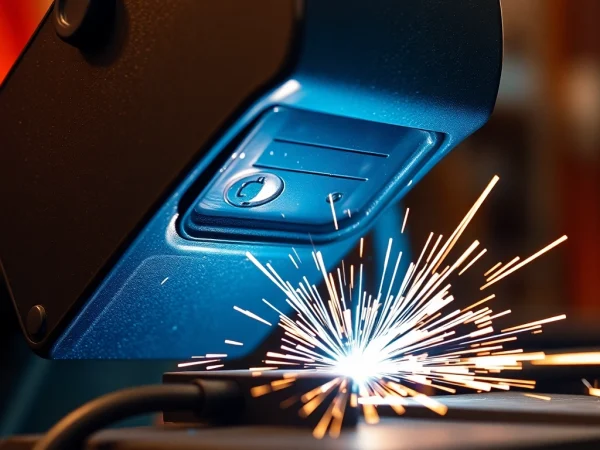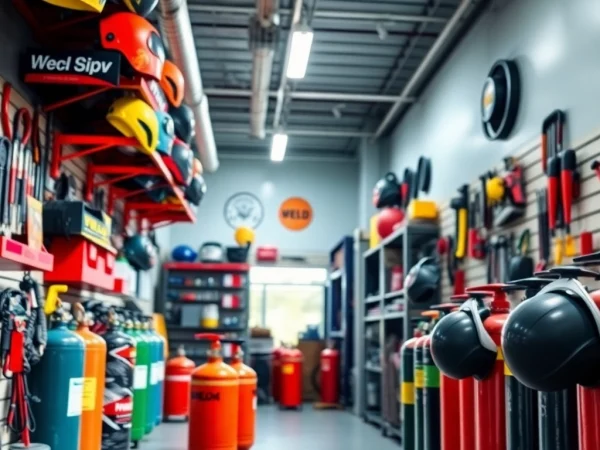Quality Door Hinges Manufacturer: Elevate Your Hardware Standards
Understanding Door Hinges: Types and Functions
When it comes to constructing or renovating spaces, the details matter significantly, and one such detail is the door hinge, an essential component that plays a critical role in functionality. A reliable Door Hinges Manufacturer offers high-quality hinges that ensure doors operate smoothly, ensuring security, accessibility, and aesthetics. But what exactly are door hinges, and how do they work? Let’s delve into the various types of hinges, their applications, and how to select the perfect hinge for your needs.
Overview of Common Door Hinges
Door hinges come in various types, each serving unique functions and aesthetics. The most common types include:
- Butt Hinges: The most widely used type, comprised of two plates (leaves) affixed to the door and frame.
- Continuous Hinges: Also known as piano hinges, these run the entire length of the door, providing added support.
- Spring Hinges: Equipped with an internal spring, they allow doors to automatically close after being opened.
- Pivot Hinges: Attached at the top and bottom of the door, allowing it to rotate around a vertical axis.
- Concealed Hinges: Hidden within the door, creating a clean aesthetic, popular for cabinet doors.
Applications of Each Hinge Type
Understanding the application of each hinge type is crucial for selecting the right one:
- Butt Hinges: Ideal for residential and commercial entry doors due to their strength and availability in various materials.
- Continuous Hinges: Excellent for heavy doors or those subjected to high traffic, as they distribute weight evenly.
- Spring Hinges: Commonly used in office doors where automatic closure is desired, improving convenience.
- Pivot Hinges: Suited for contemporary designs in which traditional side-hinged doors wouldn’t suffice, offering dramatic openings.
- Concealed Hinges: Best for cabinetry and furniture applications where aesthetics take precedence.
How to Choose the Right Hinge for Your Needs
Selecting the right hinge involves considering several factors:
- Weight of the Door: Heavier doors require sturdier hinges.
- Type of Door: Interior vs. exterior, as exterior doors may need to withstand weather conditions.
- Frequency of Use: High-traffic doors need more durable options.
- Aesthetic Appeal: The finish and style should complement the overall décor.
- Budget: Balancing quality and cost is essential, as investing in quality can save future costs on replacements.
The Manufacturing Process of Door Hinges
The manufacturing of door hinges combines traditional craftsmanship with modern technology. Understanding this process can help consumers appreciate the quality of the products they choose.
Materials Used in Hinge Manufacturing
Different materials are utilized in hinge production, influencing durability and appearance:
- Steel: Common for its strength; particularly suited for heavy-duty applications.
- Stainless Steel: Offers rust resistance, ideal for exterior and humid environments.
- Brass: Aesthetic appeal and resistance to corrosion, often used in decorative applications.
- Plastic: Lightweight and suitable for lightweight doors.
Quality Standards for Door Hinges
Adherence to quality standards ensures that the hinges perform as intended over time. Key quality standards include:
- ANSI/BHMA Standards: These provide guidelines for strength and durability of hinges.
- ISO Certifications: International standards indicating the quality management systems of manufacturers.
- Maintenance of Aesthetics: Ensuring finishes resist chips and scratches over time.
Innovative Technologies in Hinge Production
Technological advancements have significantly improved the hinge manufacturing process:
- CAD Software: Helps in designing innovative hinge shapes and functionalities.
- Automated Production Lines: Increases efficiency, precision, and lowers costs.
- 3D Printing: Allows for rapid prototyping of hinges for specific applications.
Key Features that Define Quality Door Hinges
Quality door hinges are distinguished by a set of defining features that ensure they meet the demands of varied applications.
Durability and Material Quality
High-quality hinges are made from robust materials that resist wear and corrosion, ensuring longevity. Testing through cycles of opening and closing reveals their durability; quality hinges should withstand thousands of cycles without degrading.
Design and Aesthetic Considerations
Hinges must not only perform well but also complement the design of the door and surrounding space. Options in finishes—including polished chrome, oil-rubbed bronze, and classic brass—allow for aesthetic alignment with the overall décor.
Functionality: What Makes a Hinge Effective?
A good hinge must support the door’s weight and facilitate smooth movement while also providing robust security features when necessary. Additionally, incorporating features like lubrication channels can lead to reduced friction and prolonged lifespan.
Cost Factors in Door Hinges: What to Expect
The costs associated with door hinges can vary significantly based on types and material choices. Understanding these factors is crucial for making informed purchasing decisions.
Price Variability Among Types of Hinges
Different types of hinges come with varying price points, predominantly influenced by manufacturing material and technology:
- Basic Butt Hinges: Generally the most affordable, ranging from $1 to $5 per hinge, suitable for interior doors.
- Heavy-Duty Hinges: Prices can range from $10 to $20 based on the material and load-bearing capacity.
- Specialty Hinges: Spring, concealed, and continuous hinges can go upwards of $30 due to their specialized designs and manufacturing processes.
Investing in Quality vs. Budget Options
While budget options might seem appealing, investing in quality hinges can yield significant long-term savings. Quality hinges last longer, require less maintenance, and can prevent door and frame damage over time, making them a more cost-effective choice in the long run.
Understanding Long-term Value
Long-term value takes into account factors such as durability, warranty, brand reputation, and the overall cost of ownership. Choosing a recognized brand with a good warranty coverage can mean fewer replacements and repairs, enhancing the overall value significantly.
Best Practices for Installing and Maintaining Door Hinges
The installation and maintenance of door hinges are crucial for optimal performance. These best practices ensure longevity and reliability.
Steps for Proper Installation
Correct installation is key to ensuring the door operates smoothly:
- Mark the hinge placement on the door and frame, ensuring they are level.
- Pre-drill holes to prevent wood from splitting.
- Attach the hinges to the frame first, keeping the door stable while securing the fitting.
- Check door alignment and adjust as necessary before tightening screws fully.
Maintenance Tips for Longevity
Regular maintenance can greatly extend the life of hinges:
- Lubrication: Use appropriate lubricants regularly to prevent stiffness and squeaking.
- Cleaning: Wipe down hinges to remove dust and debris that can impede movement.
- Inspection: Regularly check for rust, wear, and loose screws, replacing them as necessary to maintain functionality.
Signs of Wear and When to Replace
Recognizing the signs that a hinge needs replacement is vital:
- Difficulty in Opening or Closing: If the door is increasingly hard to operate, it may indicate hinge failure.
- Visible Damage: Cracks, rust, or bending signal that a hinge should be replaced.
- Excessive Noise: Squeaking or grinding sounds can indicate a malfunctioning hinge requiring replacement.










